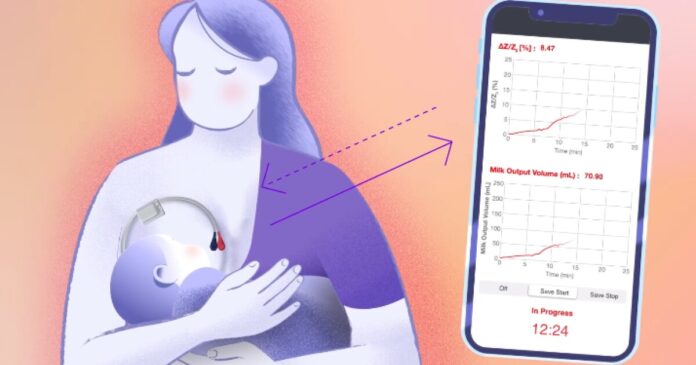Introduction to Breastfeeding and Milk Intake
Breastfeeding is a natural and essential part of infant care, providing newborns with the necessary nutrients for growth and development. However, one common concern for many parents is determining how much milk their breastfeeding infant is consuming. Traditional methods of measuring milk intake can be inconvenient, inaccurate, or both.
Traditional Methods of Measuring Milk Intake
There are existing methods for measuring breast milk consumption in babies, but they have their limitations. For instance, a baby can be weighed before and after feeding to estimate the amount of milk consumed. This method requires a highly sensitive scale and can be challenging if the infant is uncooperative. Another approach is for mothers to pump their milk into bottles of a known volume and then feed their baby from those bottles. However, this method means missing out on valuable skin-to-skin contact with the infant.
The New Wearable Device
To address the issue of measuring milk intake accurately and conveniently, a team of researchers at Northwestern University, led by Prof. John A. Rogers, has developed an experimental new wearable device. This innovative device uses an electrical current to gauge milk intake in real time, providing a solution to the long-standing challenge of monitoring breastfeeding.
How the Device Works
The device consists of two pairs of electrodes connected to a base station module, which contains a rechargeable battery, Bluetooth unit, and memory chip. These components are adhered to the mother’s skin, with the electrodes placed on either side of her breast and the base station situated above it. When activated, the device passes a weak electrical current through the breast. The impedance of this current changes based on the volume of milk present in the breast. The base station records these changes and transmits the data to an app on the mother’s smartphone, which calculates the amount of milk being consumed by the baby.
Calibration and Testing
Calibrating the device for each mother involves using it while pumping milk into a measured bottle, establishing a correlation between the volume of milk and the change in electrical current. The device was tested on 12 breastfeeding mothers over periods of up to 17 weeks and was found to be highly accurate in gauging their infants’ milk consumption.
Future Developments and Applications
The researchers are exploring further applications of the technology, including measuring the rate at which the breasts are replenished with milk and assessing the quality of the milk. There is also potential for integrating this technology into garments like breastfeeding bras, making it even more convenient for mothers to monitor their baby’s milk intake.
Conclusion
The development of this wearable device marks a significant advancement in breastfeeding technology, offering a convenient, reliable, and real-time method for monitoring milk intake. By eliminating the uncertainty surrounding how much milk an infant is receiving, this innovation can provide peace of mind for parents and healthcare providers alike, ultimately supporting the health and well-being of breastfeeding infants. As stated by Prof. Rogers, "Knowing exactly how much milk an infant is receiving during breastfeeding has long been a challenge for both parents and healthcare providers. This technology eliminates that uncertainty, offering a convenient and reliable way to monitor milk intake in real time, whether in the hospital or at home." The research behind this device has been published in the journal Nature Biomedical Engineering, further validating its potential impact on breastfeeding practices.

